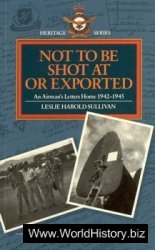After World War I, conservative businessmen renewed their opposition to the rights of workers to organize collectively. Faced with massive strikes during and after the war, they turned to new methods to put an end to the work stoppages. At a 1919 meeting on industrial relations, John
D. Rockefeller, Jr., newly inspired by Canadian MacKenzie King, suggested a more conciliatory approach to deal with labor. Those attending resisted compromise with the labor movement. Instead, over the next year, organized employers created a plan to roll back the wartime gains of the labor movement. Dubbed the American Plan, prominent industrialists and small business owners encouraged others to refuse to negotiate with labor unions. They launched a public relations campaign to persuade public opinion that closed union shops and labor unions themselves were “un-American.”
Recently founded employer organizations in more than 240 cities in some 44 states sponsored the new campaign to promote and maintain the open shop. (See open shop movement.) Other aspects of the American Plan called for a comprehensive program of political lobbying, economic campaigns, and efforts to break unions by seeking labor injunctions, blacklisting union employees, and organizing private guard associations. Arguing that American democracy required workers to have freedom of contract, groups such as the National Association of Manufacturers, local chambers of commerce, and employer groups in cities such as Minneapolis, Detroit, Seattle, San Francisco, and Toledo, refused to sign union contracts. They also worked through city and state governments to break local union power. They sponsored political tickets at the local level, bought newspaper ads and even newspapers, denied credit to or boycotted small firms that held union contracts, and lobbied local, state, and federal governments to outlaw certain union practices.
The problem with the American Plan was that both large and small firms faced high labor turnover. Employers needed to maintain a stable labor force and to retain their skilled workers in particular. Under the rubric of weleare capitalism, corporate heads put together programs of worker incentives, primarily directed at long-term skilled male employees. The companies provided pensions, stock options, public health nurses, and industrial social work departments. They sponsored company sports teams, picnics, and newsletters as well. Some employee representation programs served as company unions, giving workers a minimal voice in the workplace while forestalling individual grievances and labor trouble. They wanted to bar entirely outside union organizing. Using a “carrot-and-stick” approach, businesses sought to foster company loyalty among workers through a new system of rewards while discouraging them from joining unions through surveillance, blacklisting, and anti-union practices.
Further reading: Irving Bernstein, The Lean Years: A History of the American Worker, 1920-1933 (Boston: Houghton Mifflin, 1960).
Amusement parks See recreation.




 World History
World History









